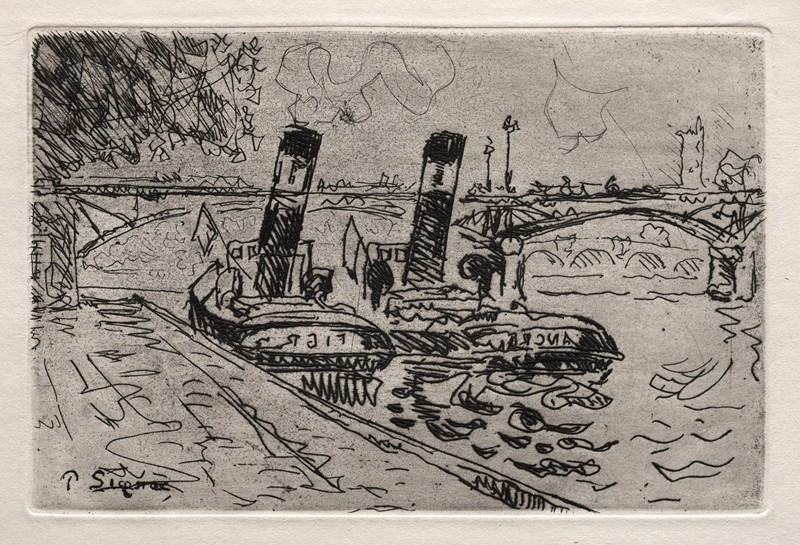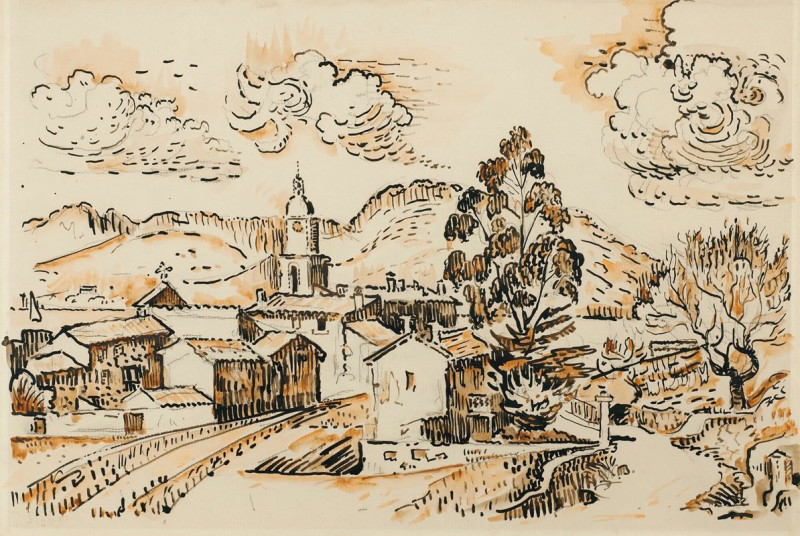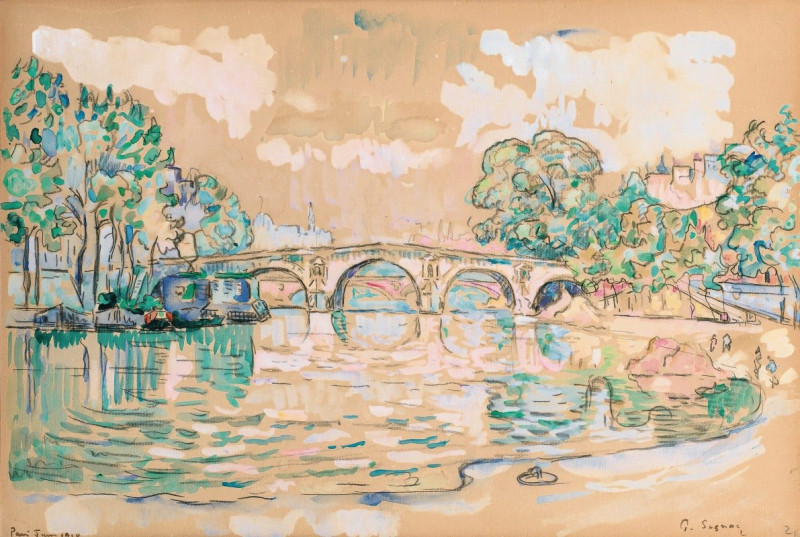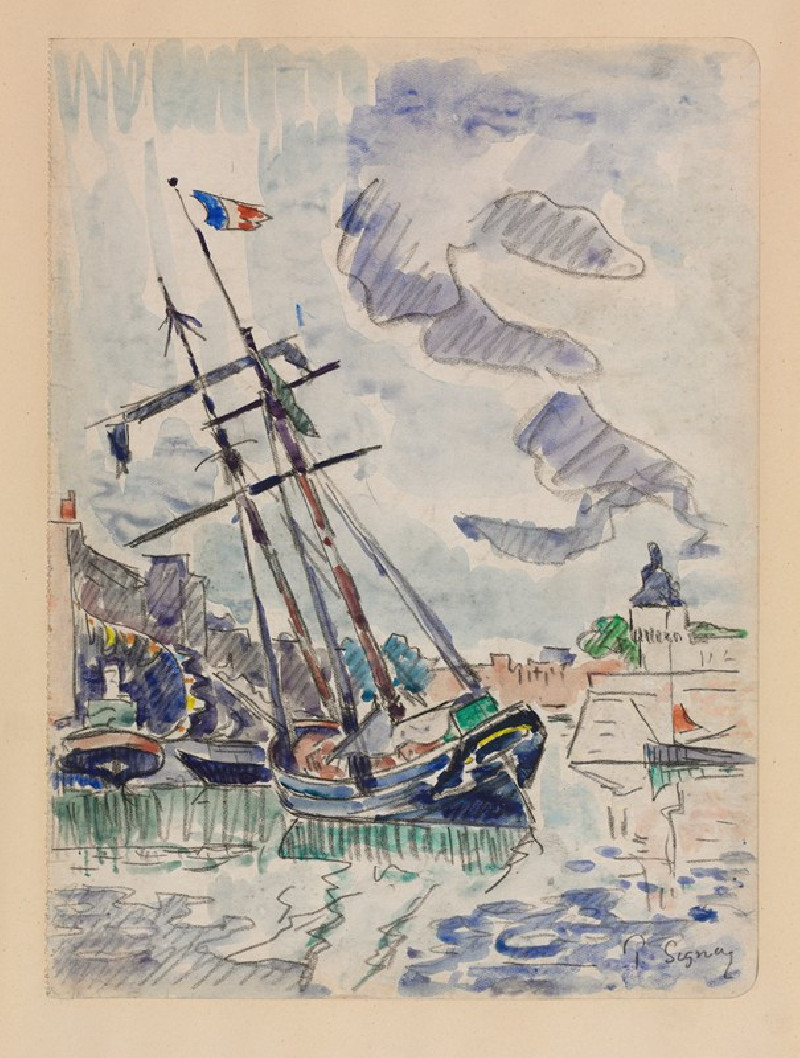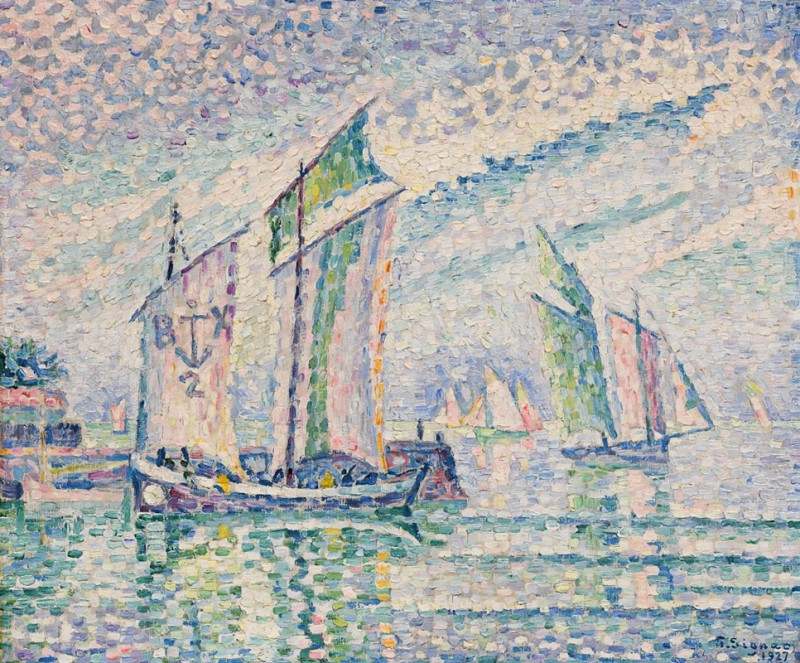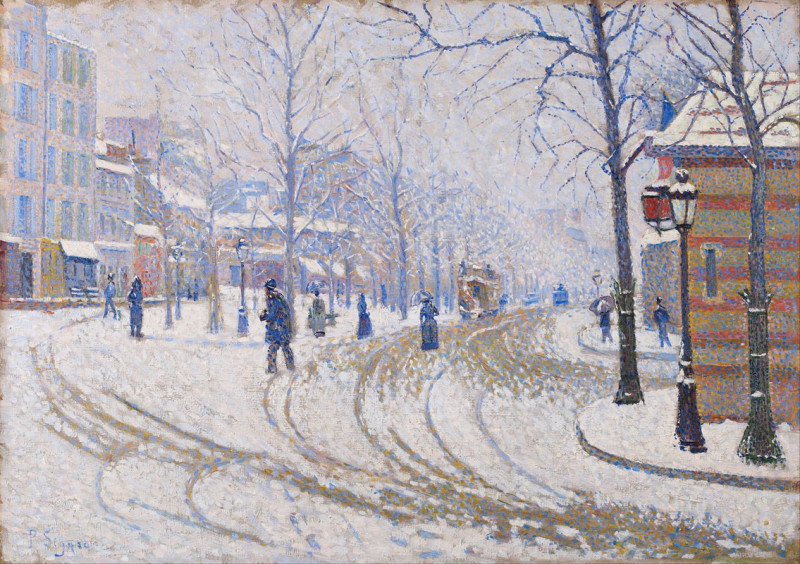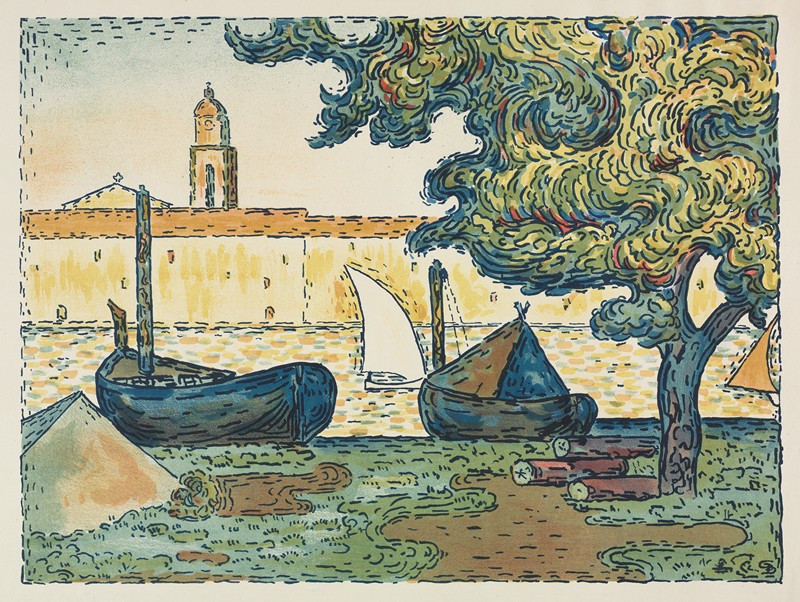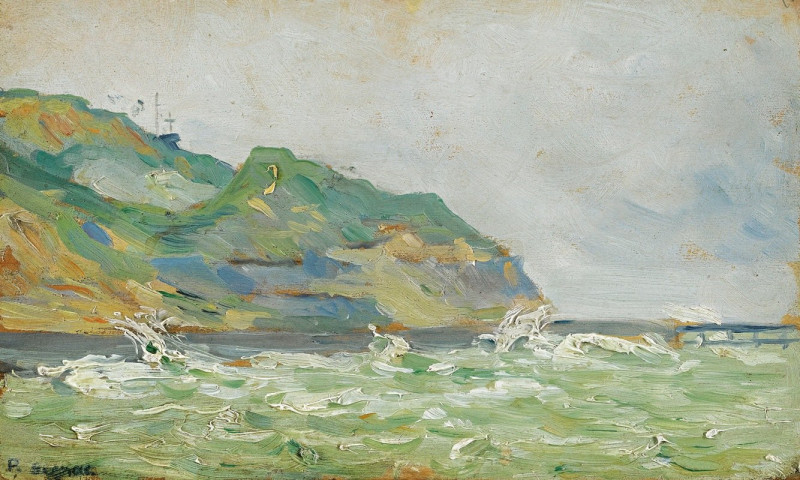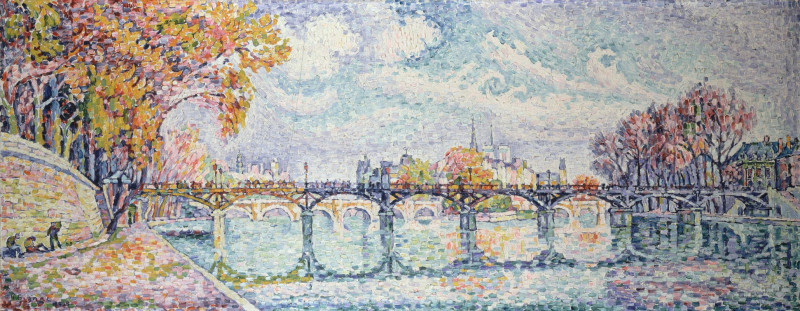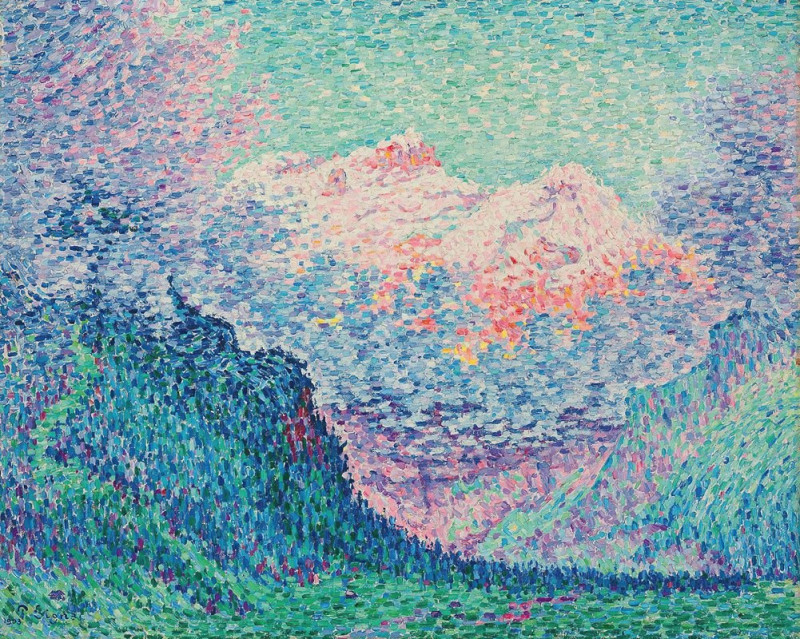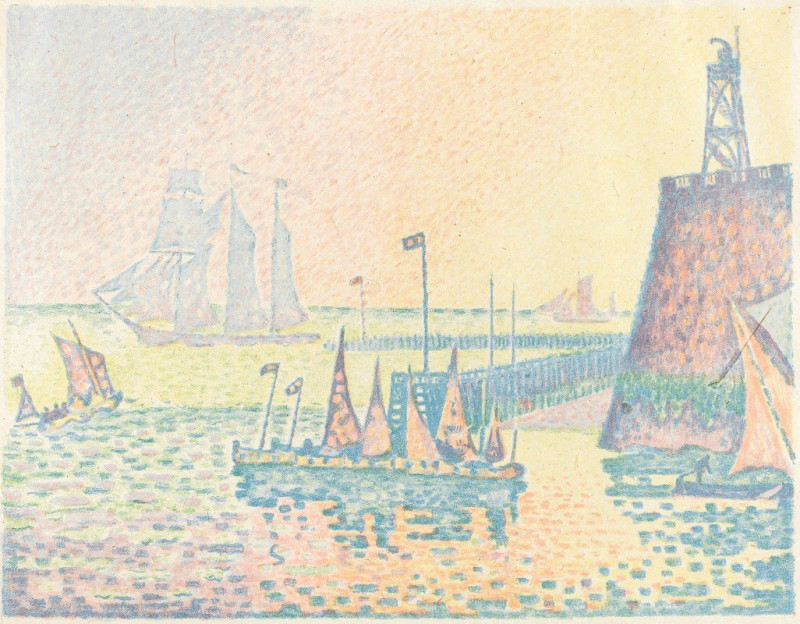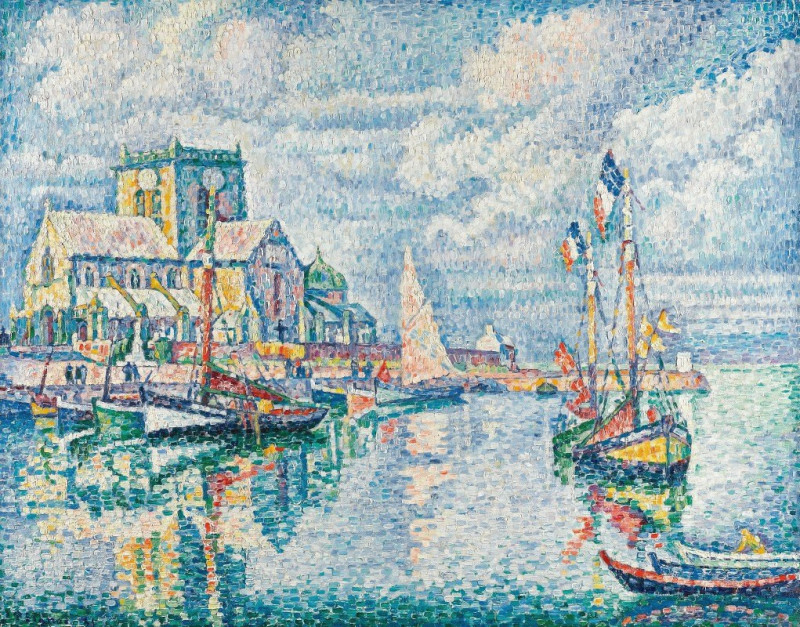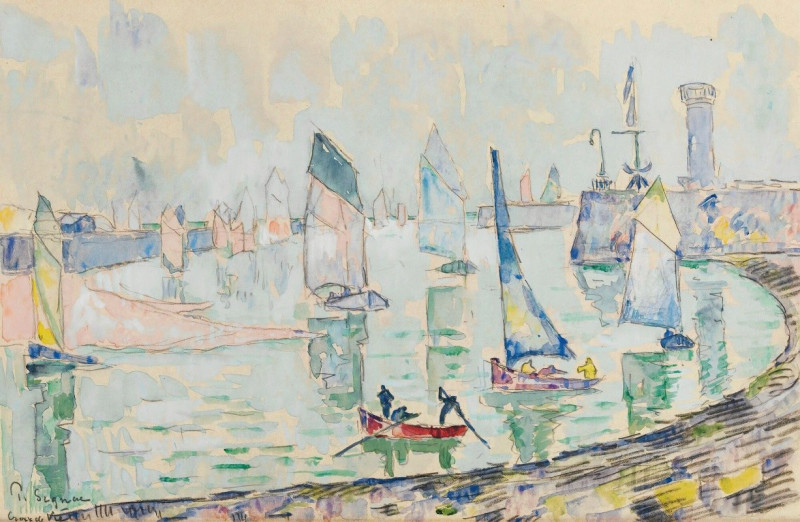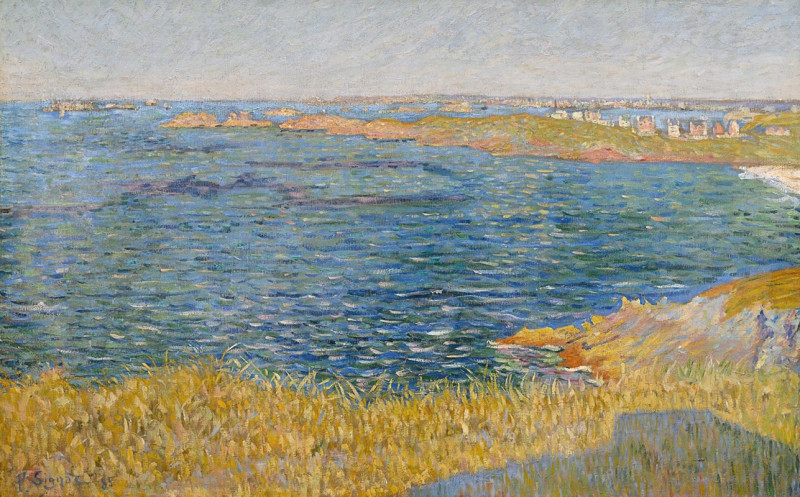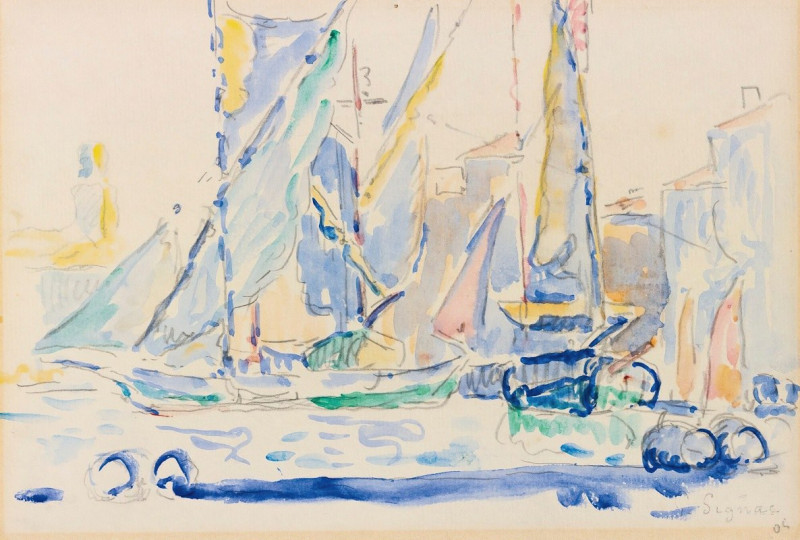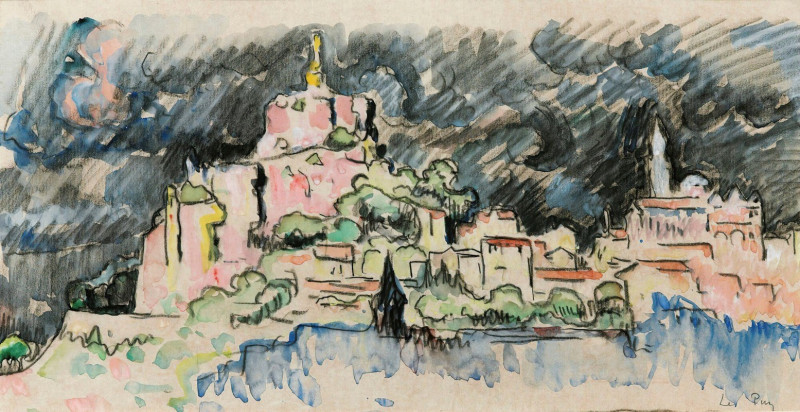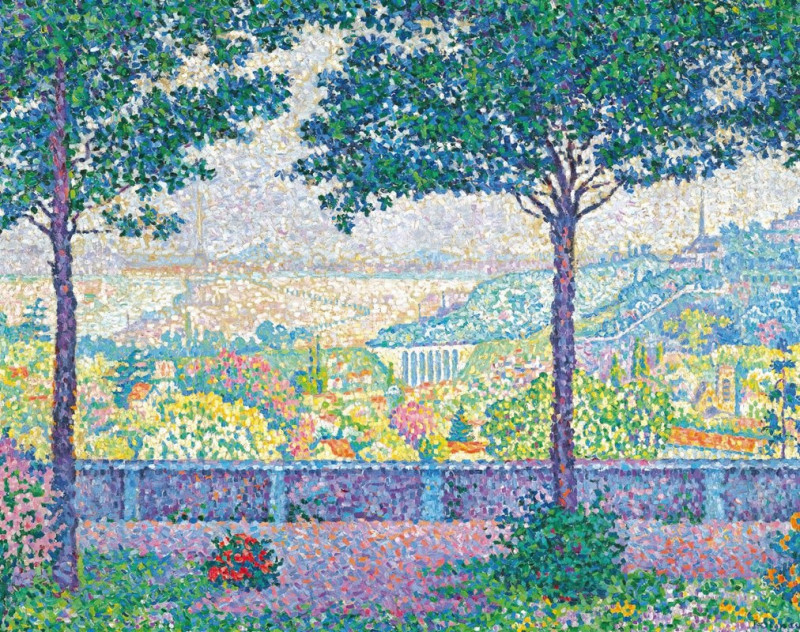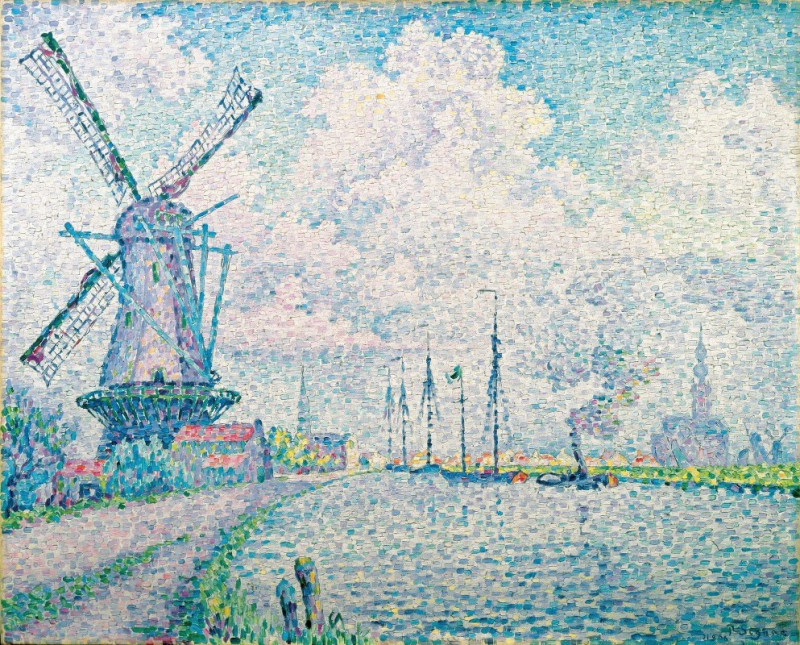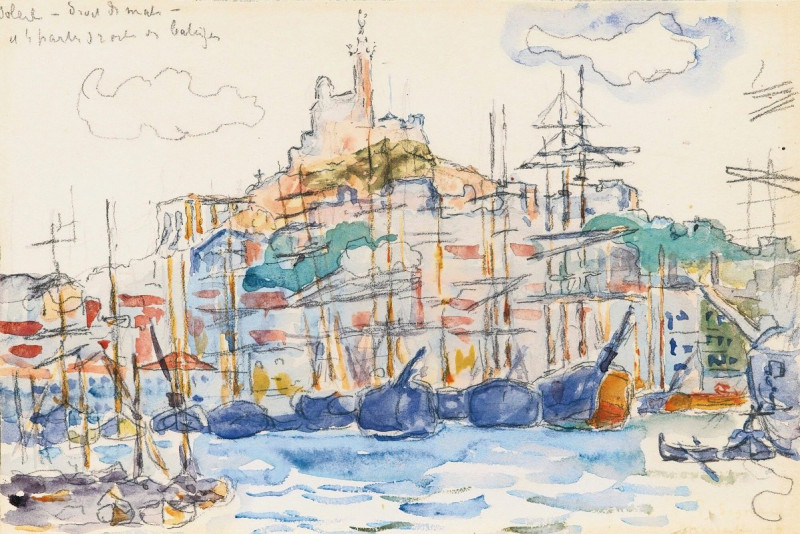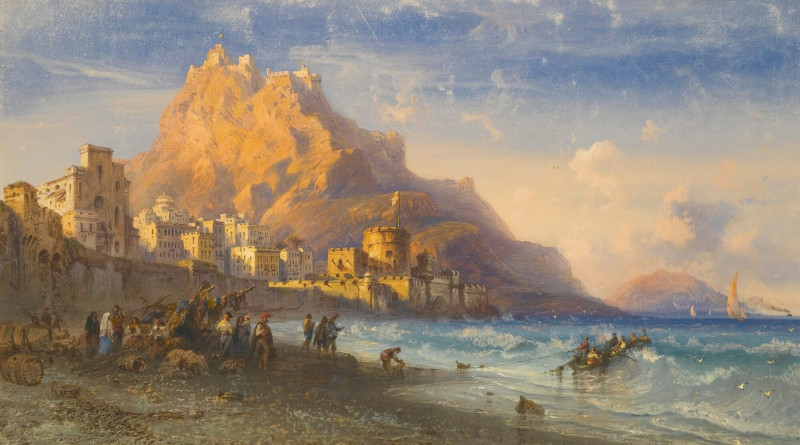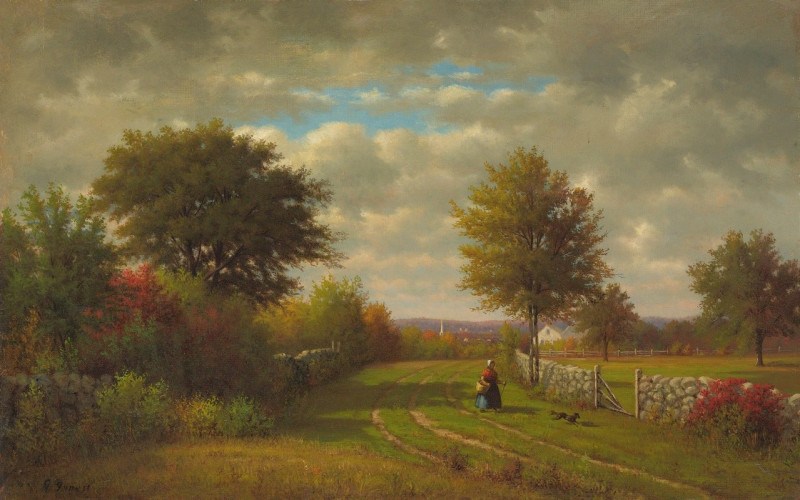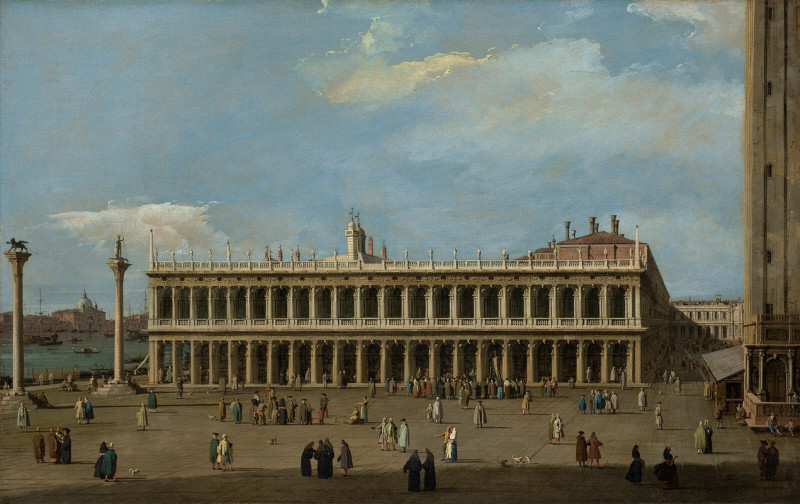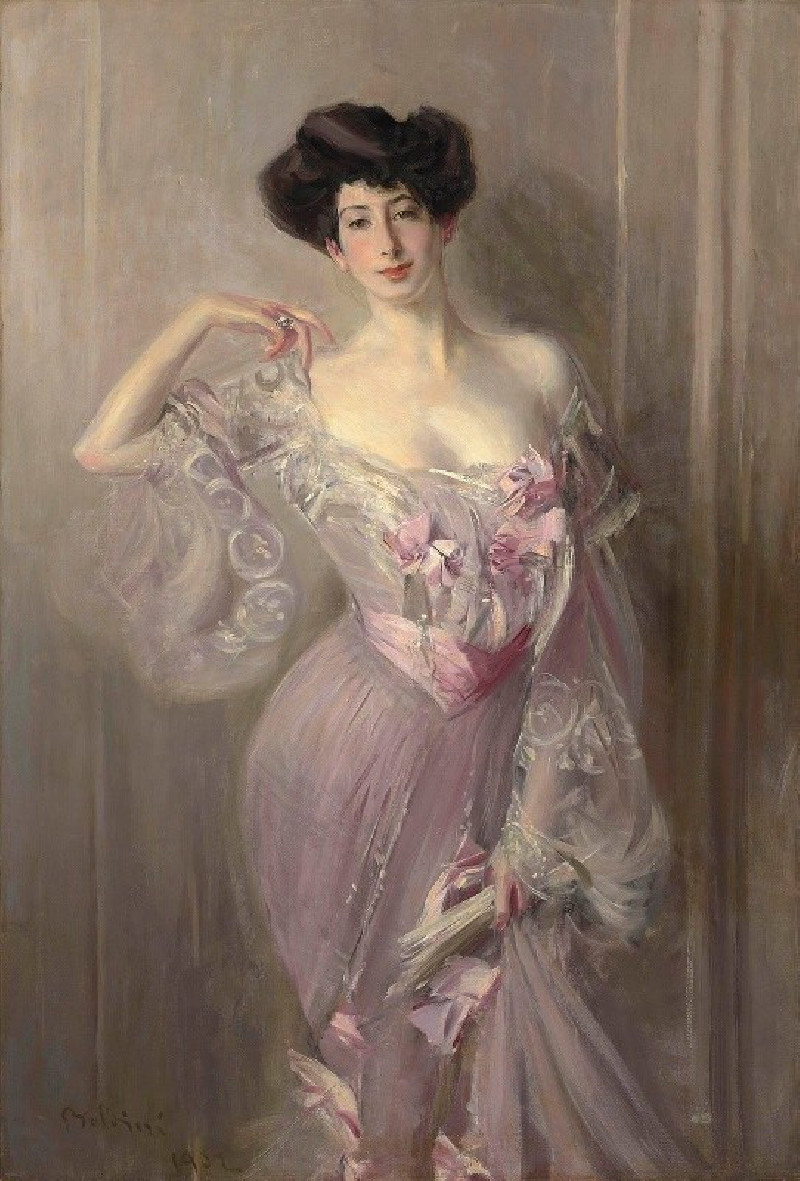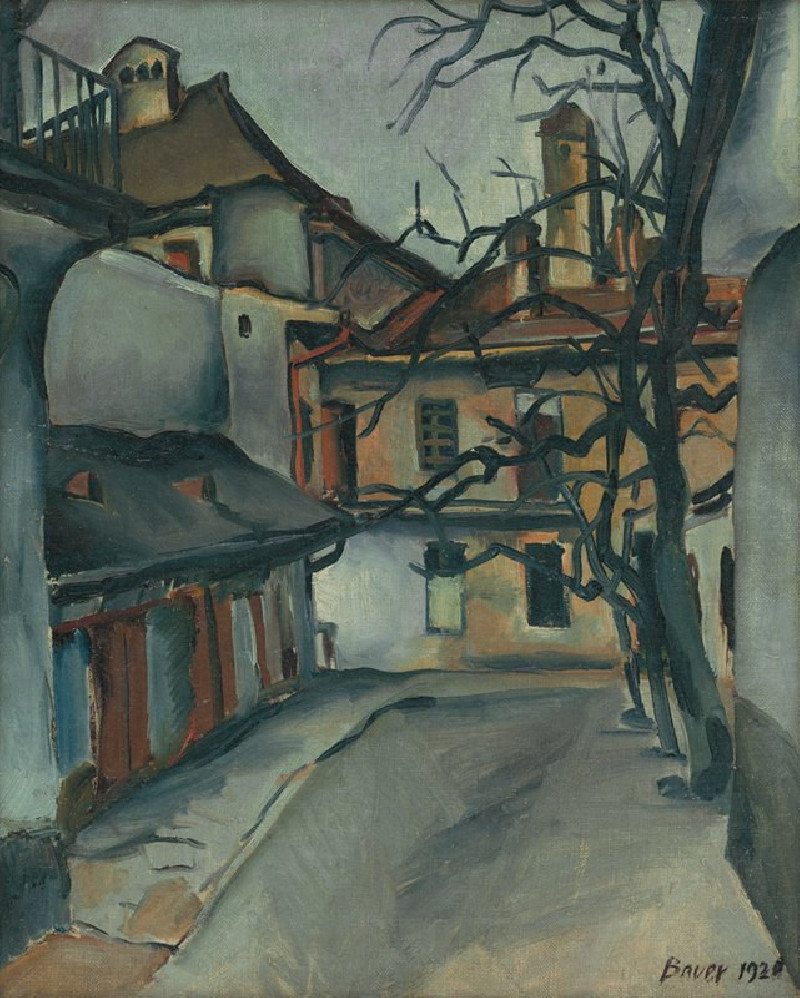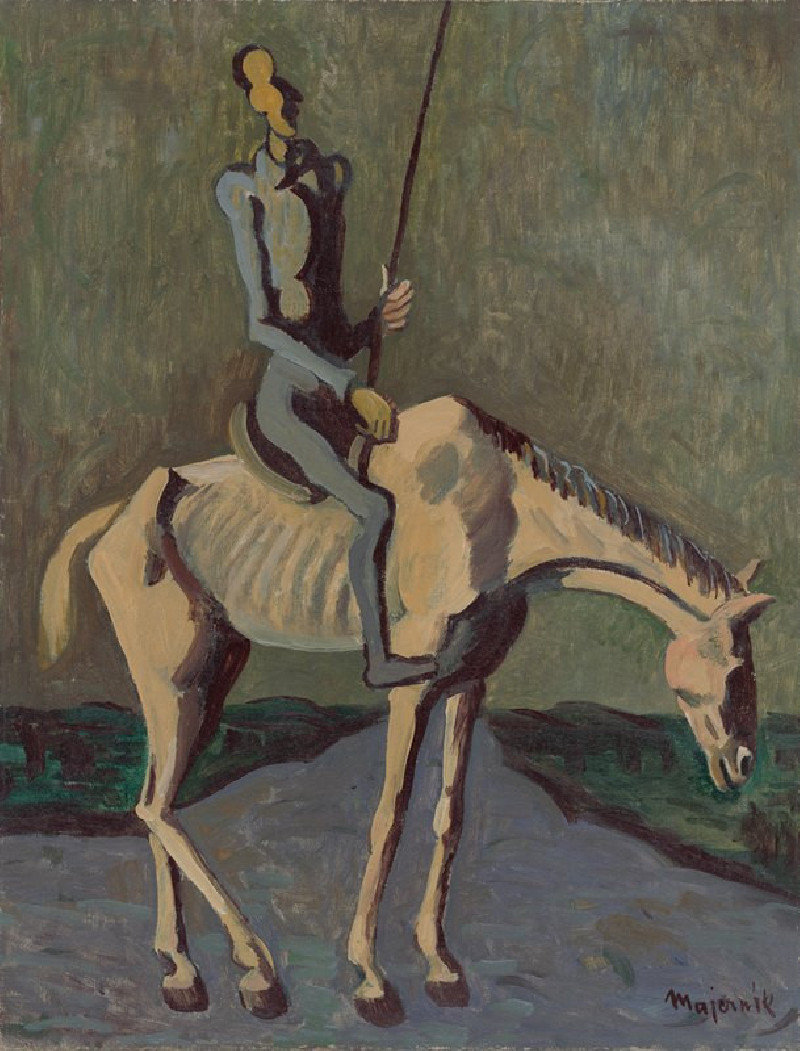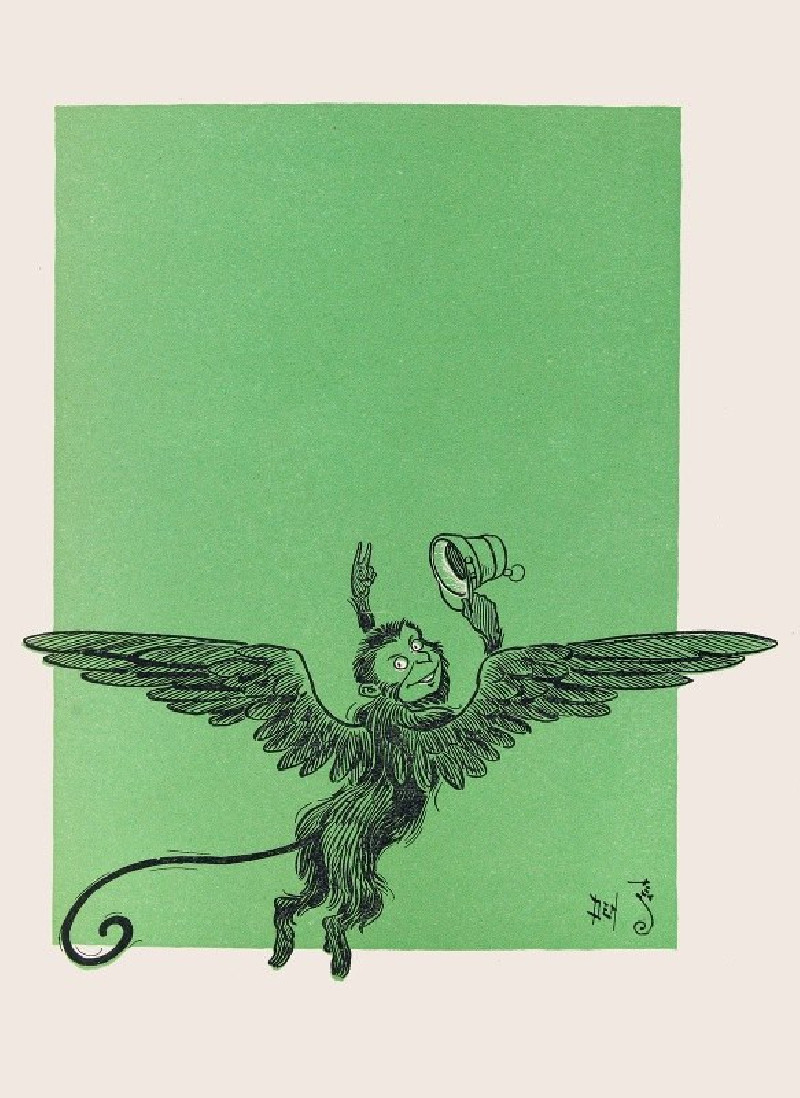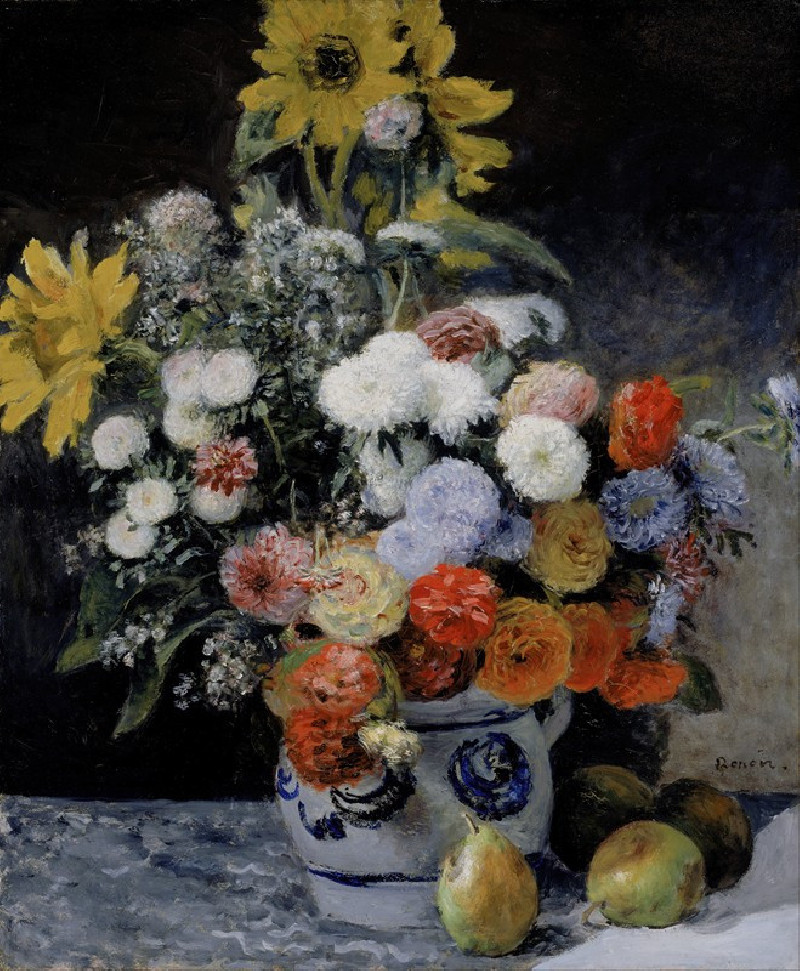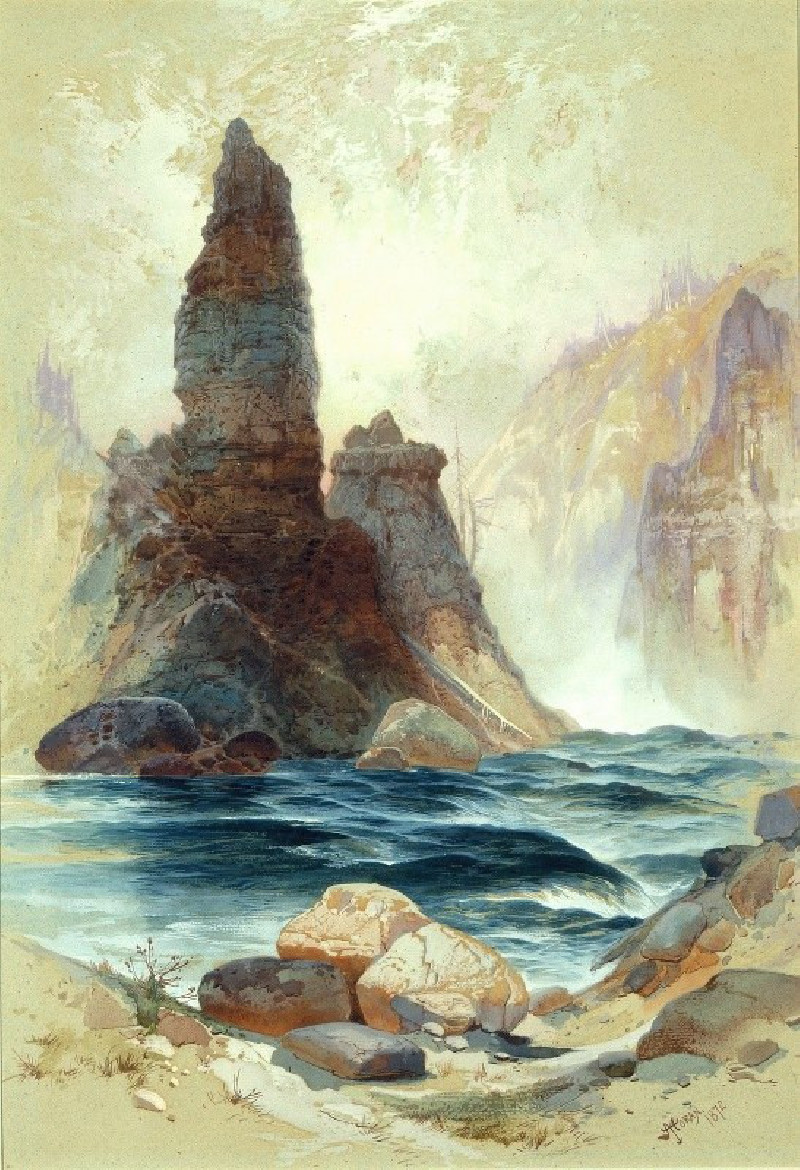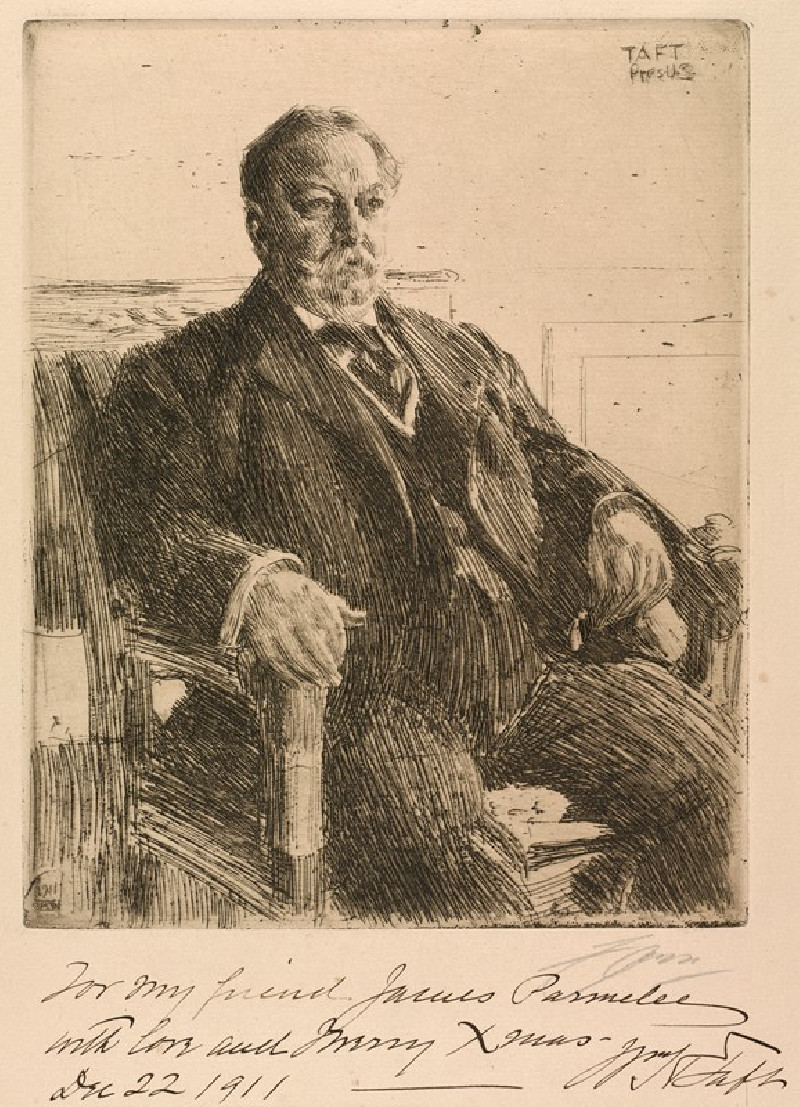Paris, Le Pont des Arts avec Remorqeurs (1927)
Technique: Giclée quality print
Recommended by our customers
More about this artwork
Paul Signac, known for his inventive approach and development of the Pointillist style, often explored urban and natural landscapes through his art. The piece titled "Paris, Le Pont des Arts avec Remorqueurs" (1927) beautifully explores the bustling river activity in Paris, capturing a vivid snapshot of the city's flow and dynamics.The artwork, rendered in a striking black and white etching, portrays the famous Pont des Arts bridge—a pedestrian bridge that crosses the Seine River. Unlike his typical colorful depictions, this black and white etching focuses on structure and movement. Centrally, the composition features two remorqueurs or tugboats, characterized by their prominent smokestacks expelling thick smoke, adding a sense of motion and industrial vigor to the scene. The river's surface is animated with fluid lines, suggesting the choppy movement of water stirred by the bustling boat activity.The background of the piece showcases the architecture of the bridge with its elegant arches serving not only as a physical but also a visual connector between the diverse riverbanks of Paris. The feathery, light etching strokes in the sky and trees contrast with the darker, more robust lines of the boats and water, highlighting a balance between natural beauty and industrial functionality—an interaction that Signac often contemplated in his works."Paris, Le Pont des Arts avec Remorqueurs" provides a glimpse into a historical and dynamic Paris, one that resonates with both the tranquility of its architectural heritage and the relentless pulse of modern progress.
Delivery
Returns
Paul Signac (1863-1935) was a French Neo-Impressionist painter. Together with Georges Seurat, Signac developed the Pointillism style. He was a passionate sailor, bringing back watercolor sketches of ports and nature from his travels, then turning them into large studio canvases with mosaic-like squares of color. He abandoned the short brushstrokes and intuitive dabs of color of the impressionists for a more exact scientific approach to applying dots with the intention to combine and blend not on the canvas, but in the viewer's eye.

